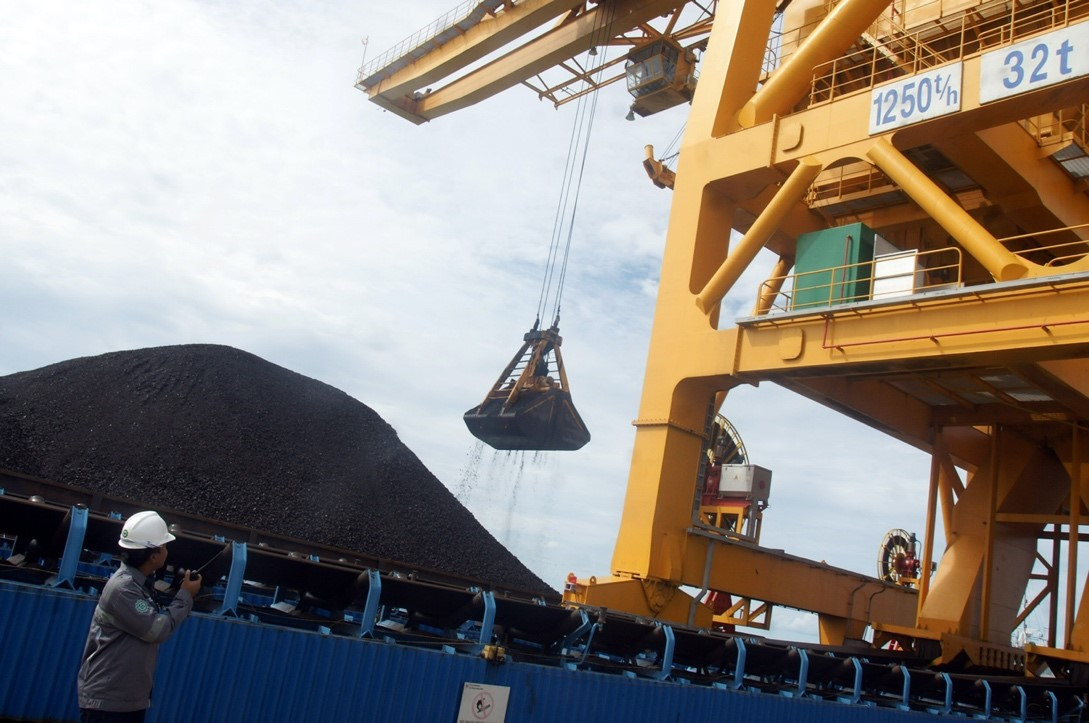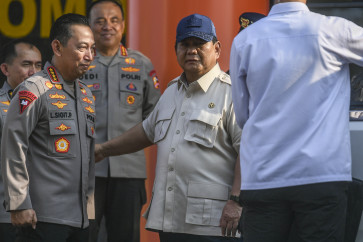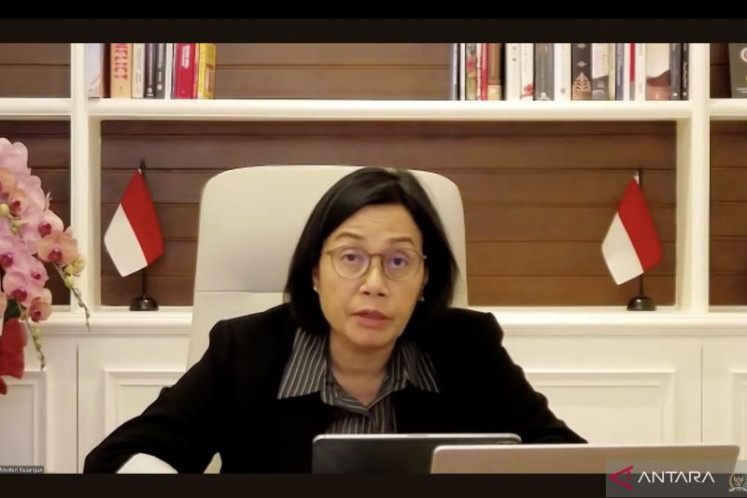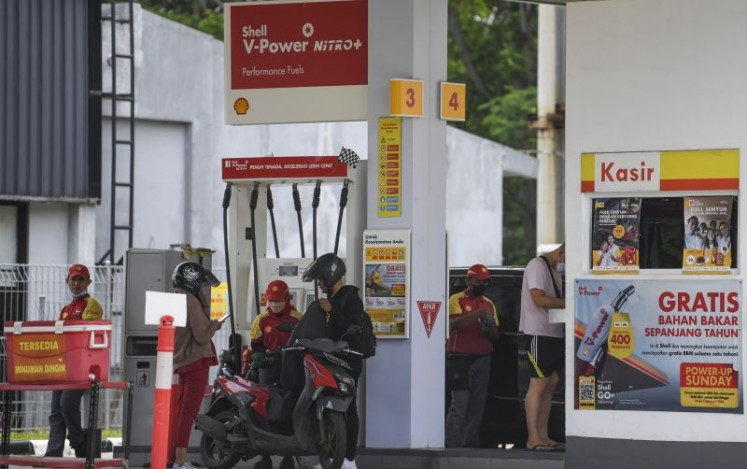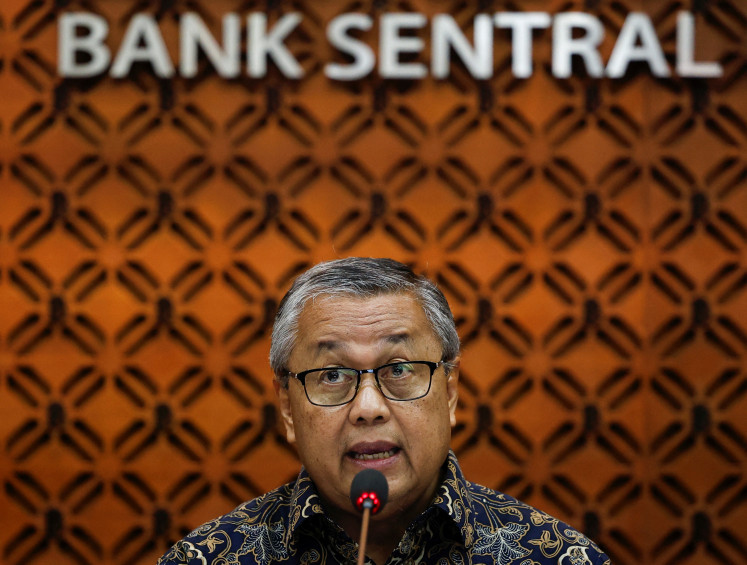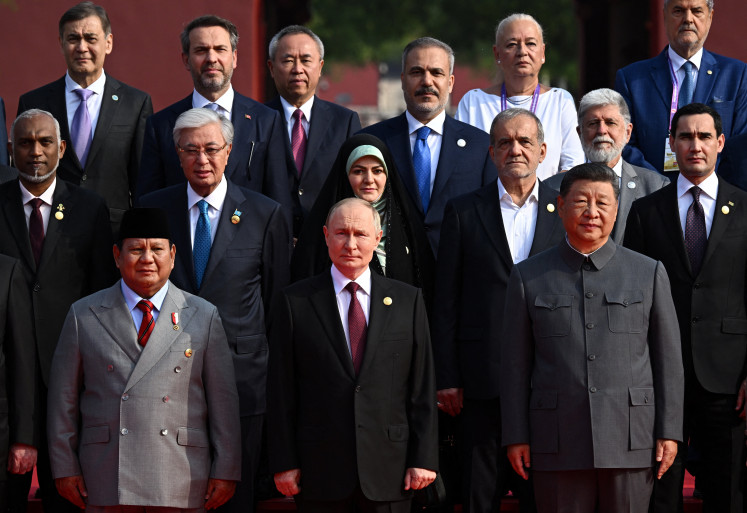Popular Reads
Top Results
Can't find what you're looking for?
View all search resultsPopular Reads
Top Results
Can't find what you're looking for?
View all search resultsH2 2022: Opportunities and challenges for Indonesia
Indonesia has an opportunity to maintain continued growth and recovery in the second half of the year, as long as it keeps the pandemic under control to maintain a positive consumption trend.
Change text size
Gift Premium Articles
to Anyone
I
n the first half of the year, despite the ongoing battle against COVID-19 pandemic and the uncertainty surrounding the global economy, Indonesia’s economy has managed to keep recovering steadily.
The largest economy in Southeast Asia is expected to expand by around 5 percent year-on-year (yoy) in the first semester of 2022, back to its pre-pandemic average growth rate. This result is greatly influenced by a robust pandemic management and high vaccination level, allowing the government to ease restrictions on public mobility.
Global supply chain disruptions amid the global recovery imbalance have led to a surge in commodity prices. The situation has been exacerbated by Russia's invasion of Ukraine, leading to the global energy and food crises. Yet, it has generated a windfall profit for Indonesia.
Indonesia is among the world’s largest commodities exporter, particularly for coal and crude palm oil. As a result, it has maintained a large trade surplus, accumulating US$24.9 billion in the first semester of 2022, more than double the $11.8 billion it booked in the first half of 2021.
Exports reported significant growth of 37.1 percent yoy, and the current account is expected to continue posting a surplus. This provides a positive catalyst for a stable rupiah exchange rate amid the rising threat of “risk off” due to more aggressive and faster global monetary normalization during the current environment of soaring inflation.
Moreover, the windfall has substantially increased state revenue. Thus, Indonesia’s fiscal balance for the first half of the year has recorded a 0.4 percent surplus of gross domestic product. This has enabled the government to pump additional funds for energy subsidies, meaning that the prices of subsidized fuel, liquefied petroleum gas (LPG) and electricity can be maintained throughout the year to help withstand rising inflationary pressure.
Indonesia’s headline inflation rate was 4.35 percent yoy in June 2022, already above the inflation target range of 3 percent, plus/minus 1 percent. However, this was mainly because of volatile price inflation rather than core inflation.
Volatile price inflation is at 10.07 percent yoy, primarily driven by food ingredient inflation of 9.57 percent yoy amid inclement weather at several major production hubs. Administered price inflation, meanwhile, is at a lower rate of 5.33 percent yoy, with energy inflation at 4.20 percent yoy, thanks to the additional subsidies.
Core inflation, which excludes volatile and administered price inflation and therefore can reflect more on demand recovery, continues to gradually rise to 2.63 percent yoy. Compared with other countries, Indonesia’s inflation rate is still relatively low and manageable, giving room for Bank Indonesia to avoid rushing to hike its policy rate (BI 7-day Reverse Repo Rate). This could support the ongoing economic recovery to some extent.
Global uncertainty, unfortunately, is not going to fade away in the second half of the year. This presents another challenge to Indonesia’s economic recovery, going forward. Persistent, soaring global inflation followed by more hawkish monetary normalization has triggered the fear of a global recession or stagflation, meaning that global demand is expected to wane in the future.
As such, global energy and food prices have begun to indicate a general reversal. Although this could suggest that the inflationary pressure from the energy and food supply shock might subside, the situation could weaken Indonesia’s export performance and thus, state revenue.
Furthermore, as capital outflows are likely to continue, especially in the portfolio market, the trade surplus could see a narrowing trend to pressure foreign exchange reserves and rupiah stability. A depreciating rupiah might instead lead to imported inflation.
A foreign exchange inflow, including export proceeds, is also constrained by widening differences in interest rates between Indonesia and other countries that have already hiked their policy rates. It is now more lucrative to deposit foreign currencies abroad.
On the bright side, Indonesia’s economic recovery still has a chance to accelerate in the second half of 2022. The likelihood of the country plunging into a recession is just 3 to 5 percent, according to the market consensus.
The price of coal, Indonesia’s main export commodity, remains in an upward trend. Although demand from China may weaken due to Beijing’s zero-COVID policy, demand from the eurozone is improving, as the region has decided to cut down on energy imports from Russia.
This, in turn, could support export performance in the second semester, retaining the trade surplus and the stability of rupiah exchange rate. In addition, State Budget revenue might still be maintained so that it could assist stability and accelerate growth.
Another support for growth in the second half comes from the domestic side.
If Indonesia can keep its daily COVID-19 figures in check, public mobility restrictions can be eased further, which will strengthen domestic demand. Private consumption contributes more than half of GDP.
Indonesia could see an opportunity to accelerate economic growth in the third quarter, as there is a low base effect from the Delta wave in the third quarter of 2021. During that period, the government introduced and imposed the public activity restrictions, which significantly reduced economic activities.
With healthy domestic demand, steady export growth, prudent fiscal condition and manageable COVID-19 transmission, we view that the Indonesian economy can still expand at around 5.17 percent this year, stronger than last year’s growth of 3.69 percent.
Headline inflation, which has surpassed the target range, might hurt household purchasing power to a certain degree. Yet, high export performance of key commodities could keep generating windfall export earnings and fiscal revenue. This will allow the government to increase the energy subsidy and disburse temporary unconditional cash transfers while still reducing the budget deficit toward fiscal consolidation in 2023.
***
The writer is an economist at Bank Mandiri.

